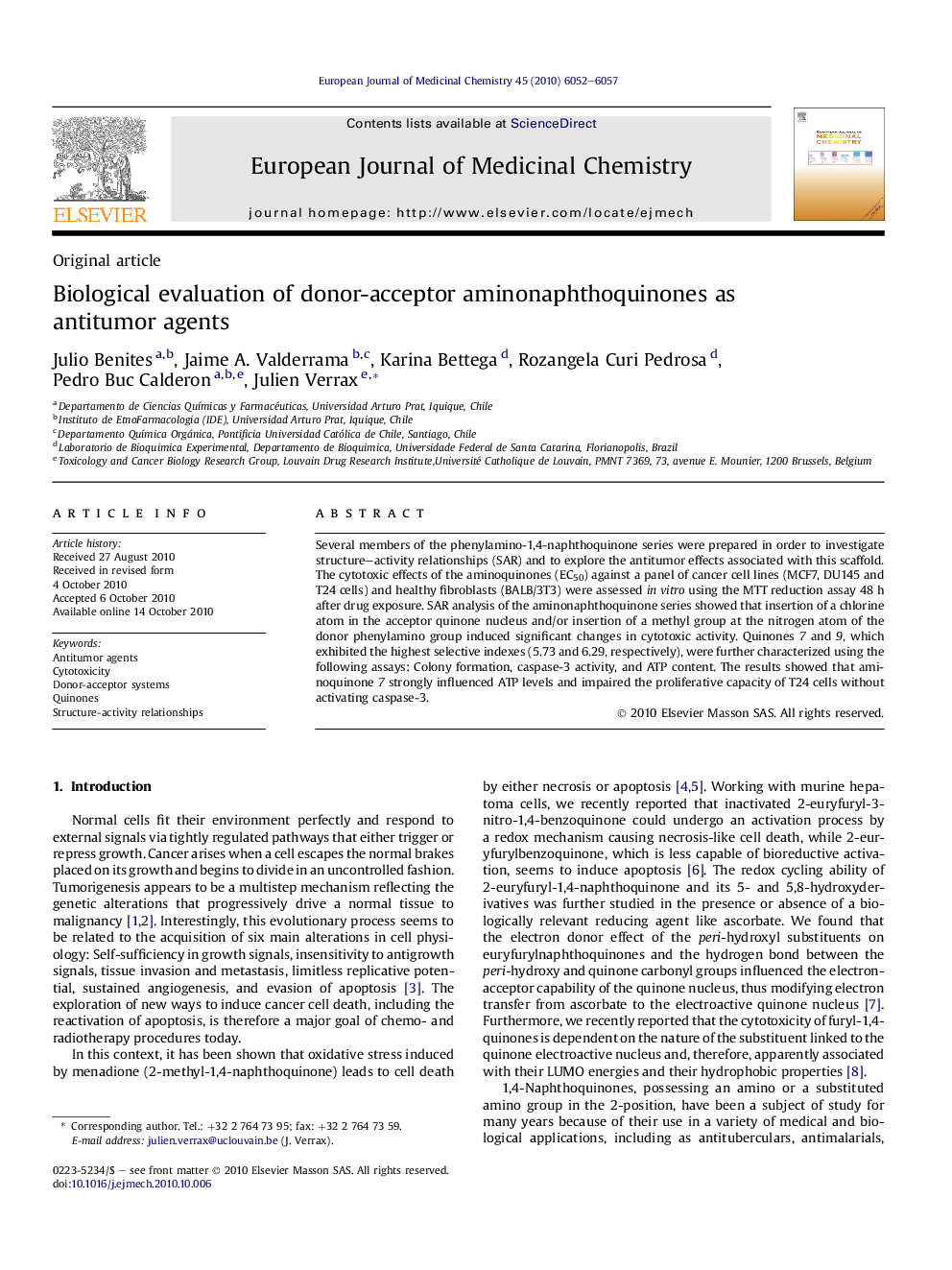| Article ID | Journal | Published Year | Pages | File Type |
|---|---|---|---|---|
| 1393146 | European Journal of Medicinal Chemistry | 2010 | 6 Pages |
Several members of the phenylamino-1,4-naphthoquinone series were prepared in order to investigate structure–activity relationships (SAR) and to explore the antitumor effects associated with this scaffold. The cytotoxic effects of the aminoquinones (EC50) against a panel of cancer cell lines (MCF7, DU145 and T24 cells) and healthy fibroblasts (BALB/3T3) were assessed in vitro using the MTT reduction assay 48 h after drug exposure. SAR analysis of the aminonaphthoquinone series showed that insertion of a chlorine atom in the acceptor quinone nucleus and/or insertion of a methyl group at the nitrogen atom of the donor phenylamino group induced significant changes in cytotoxic activity. Quinones 7 and 9, which exhibited the highest selective indexes (5.73 and 6.29, respectively), were further characterized using the following assays: Colony formation, caspase-3 activity, and ATP content. The results showed that aminoquinone 7 strongly influenced ATP levels and impaired the proliferative capacity of T24 cells without activating caspase-3.
Graphical abstractFigure optionsDownload full-size imageDownload as PowerPoint slideResearch highlights► A series of phenylaminonaphtoquinones were synthesized and evaluated for their ability to inhibit cancer cell proliferation.
